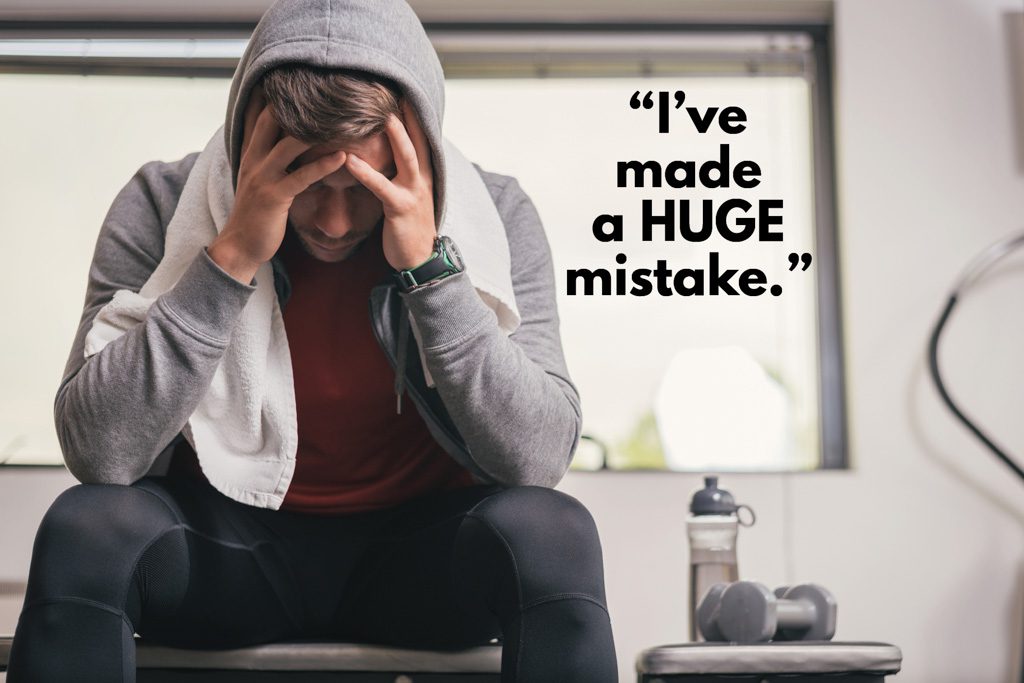You must fight the “commodity effect” with your business.
Here’s what commoditization looks like in fitness. It’s the exact plan to reduce the perception of value for coaching:
You offer free trials to prospective clients. But inexperienced people can’t tell the difference between your free trial workout and F45’s trial workout and a CrossFit gym’s trial workout and a Fit Body Boot Camp’s trial workout.
You think your coaching is far superior, but prospective clients don’t have a clue how to evaluate coaching. They don’t know anything about fitness. They see “free trial workout” and that’s it.
Remember, you know your workouts are different, but they don’t. It’s just burpees or biceps curls in a different building to them. They have no frame of reference.
When a consumer can’t discern differences among products, the lowest price is the determining factor.
Competing on price is very bad for service businesses, and you do not want to win the race to the bottom. It’s also bad for clients, who will continually jump ship for a better deal and never experience the long-term effects of great coaching.
Quick Test
Free trials, free weeks and free months drive value down in the eyes of the consumer.
Want proof?
Look at the pricing for similar fitness services in your town 10 years ago versus now. Has it gone up, down or stayed the same?
If pricing is lower or about the same, that means the perception of value is not going up in your town.
Here’s now to change course.
Free Consultations
Top gym owners use the Prescriptive Model to fight commoditization, stand out in the market, and attract and retain high-value clients for years.
I’ll give you the basics below, but if you want to dig into details, they are all here.
Here’s the thousand-foot view:
- Meet with prospective clients and ask them for their goals.
- Lay out exactly how your service can help them accomplish those goals.
- Show them the price, sign them up, start the on-ramp program, and schedule a Goal Review Session 90 days down the line.
- After 90 days, meet with the client to show them the progress they have made toward their goal and celebrate it.
- Adjust your plan if needed to make swifter progress or reaffirm the existing plan.
This cycle is full of positives:
- You get face time with valued members, which increases retention.
- You have an opportunity to solve problems, which increases retention.
- You can show them how their program adjusts to their changing goals, which increases emotional investment and reduces churn.
- You can upgrade services to provide swifter results, which improves revenue and average revenue per member (ARM).
- You can ask satisfied clients for referrals, which increases client count and revenue.
- You can ask for testimonials, which can be used in marketing to increase set rate, show rate, close rate, client count and revenue.
If you use a free consultation to sell your services, you will stand out in the market because you are showcasing coaching, not a workout. Instead of assuming an inexperienced person will appreciate your coaching during a trial session, you are demonstrating excellence as a problem-solving fitness expert.
That creates value.
If you show clients you are invested in their journey by tracking their progress and updating their prescriptions as necessary, you further increase value.
The Prescriptive Model is the cure for commoditization. It’s not uncommon for Two-Brain gyms that use this model to have ARM of $260 while nearby gyms that sell the same thing collect about $110 per client per month (these are actual stats from Stockholm, Sweden, by the way).
I’ll tack on a few more stats from over 10,000 gyms worldwide:
- The average close rate on consultations is close to 80 percent.
- The average close rate on free trials is under 30 percent in gyms that track the number (most don’t).
- The average length of engagement for a client who comes in through a consultation is 23 months.
- The average length of engagement for a client who comes in through a free trial is 7.8 months.
And now I’ll be blunt: Free trials will not help you build a great fitness business.
If you’ve only used free trials, it might seem like they’re working, but that’s because you haven’t tried anything else.
Free trials simply don’t convert well. They lead to lower retention. They commoditize your coaching and drive the price down.
The Prescriptive Model will serve your business and your clients better.
If you want to build a sustainable, profitable gym and produce fitter, healthier, happier clients, ditch the free trials and focus on building real relationships, one on one, with consultations and consistently updated prescriptions.
Change more lives!

